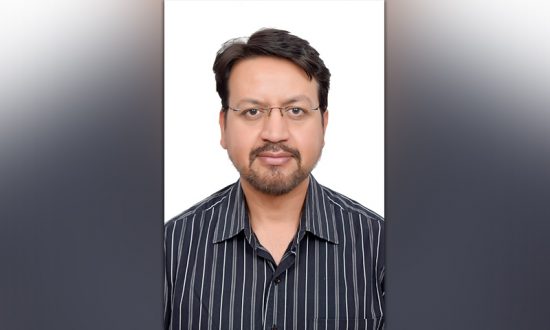Mr. Harminder Singh Multani is the CEO of MyDentalPlan Healthcare Pvt. Ltd, an IT- enabled healthcare company. He brings a rich experience of over 23 years having worked in diverse sectors such as the Defence Forces, Retail Banking (ICICI Bank Ltd), Consumer goods (Godrej Industries & Godrej Agrovet), education consulting and IT. His core strengths lie in being able to manage and motivate people and being able to develop strategic direction for businesses and then steer businesses in the direction.
Digital technologies have been changing the face of dentistry, especially over the last decade. The digital transformation of any industry represents its future. According to reports by Data Bridge Market Research company, the digital dentistry market is expected to grow to reach a whopping USD 1,1101.10 million by 2027. The progressive transformation of the industry is linked to increase in dental artificial replacements made used advanced CAM and CAD techniques instead of conventional ones.
What is the digitalisation of dentistry?
In the course of the 21st Century, advancements and digital technologies like Artificial Intelligence, Machine Learning and Virtual Reality have become an integral part of most industries. Disciplines of medicine, in particular, are well-placed to integrate technological advancements into daily workings. While the process of the digitalisation of dentistry has been underway for a while now, the COVID-19 pandemic has hastened the digital transformation of every industry and business, including dentistry.
The use of digitalisation is not only referred to as an assisting tool for doctors but to improve patient experience too. Digital marketing is seamlessly improving customer service and experience. Digital marketing actions via newsletters, tools such as chatbots or social networks brings the doctors closers and at approachable distance at all times. Other accessibility options include online appointment booking, teledentistry, record keeping, etc.
Rise of digital dentistry
Teledentistry bridges the gap for dental care disparities between urban and rural remote communities. Technology is bringing access to healthcare in the farthest and remotest areas with rough terrain in the country, through video and tele-consultations. Not just patients but technology also makes a lot of things easier for doctors. Digital recordkeeping and diagnosis can be useful tools for dentists.
Intraoral cameras which help create a three-dimensional digital file of the oral cavity to work on are used to whip out digitised plaster models and impressions of the patients’ dental arch. Furthermore, technology also helps in pre-designing a surgical template or treatment plan based on the current condition clearly predicting final results and the path needed. This allows a more precise surgical technique to be implemented as it reduces the risk of human error.
With the recent development of other devices such as automated computer-derived manufacturing machine, and modern cone beam computed tomography (CBCT) radiograph machine, the digitalised accuracy of dentistry is only slated to improve. Three-dimensional (3D) printing has been ever so useful in creating intended dental arch structures in cases of dental brace treatment, implants or cosmetic treatments. It allows a complex design to be produced and mass-produced at a faster and accurate rate.
With 3D modelling in the picture, it is way easier to reconstruct a lost tooth or set of teeth, even the whole dental arch. Geriatric patients or those who lose teeth earlier in life are no more at the mercy of those dentures. Even the biting planes can be checked and made sure the unwanted forces are not applied on the jawbones.
AI automation and dentistry
AI has been useful in research based on varied dental procedures and their outcomes, to predict oral issues much before they start presenting and to map out optimal treatments. One of the best examples would be the diagnosis and detection of lesions of the oral cavity through artificial intelligence.
Artificial neural networks have also become a major contributor to the field of dentistry by giving the world toothache-predictive models. The said model recognizes and predicts best eating habits, oral hygiene and stress to avoid/prevent toothaches since oral health is related to overall health. Assisting in complicated dental procedures like root canal configuration and morphology in endodontics to designing of smile perfection in dental aesthetics and cosmetology along with treatment prediction for the satisfactory culminated results, artificial intelligence has been proving to be a great help.
The key to AI succeeding in dentistry or any field for that matter is feeding correct data for it to develop the ability to begin detecting anomalies and predicting certain aftermath. However, the world must remember that artificial intelligence aiding the medical and dental field does not make the subject matter expert obsolete.
In addition, fraud prevention is also made significantly uncomplicated through technology that brings along with it the ability of image processing. Through tech, the delivery of insurance products/services to the right customer is also a comparatively painless process. The use of IT for operations obviates the chances of fraud on both ends.
AI can also give a major fillip to the dental insurance market. With AI-driven predictive models, estimating risk becomes possible which in turn can help correctly estimate premiums to be collected. This tech can also be deployed to stop frauds such that in the absence of suitable mechanisms, it becomes possible to remotely judge that the treatment covered is delivered to the right beneficiary. The AI powered systems will pay the way for growth of dentistry in the country and will help scale dental insurance landscape.


